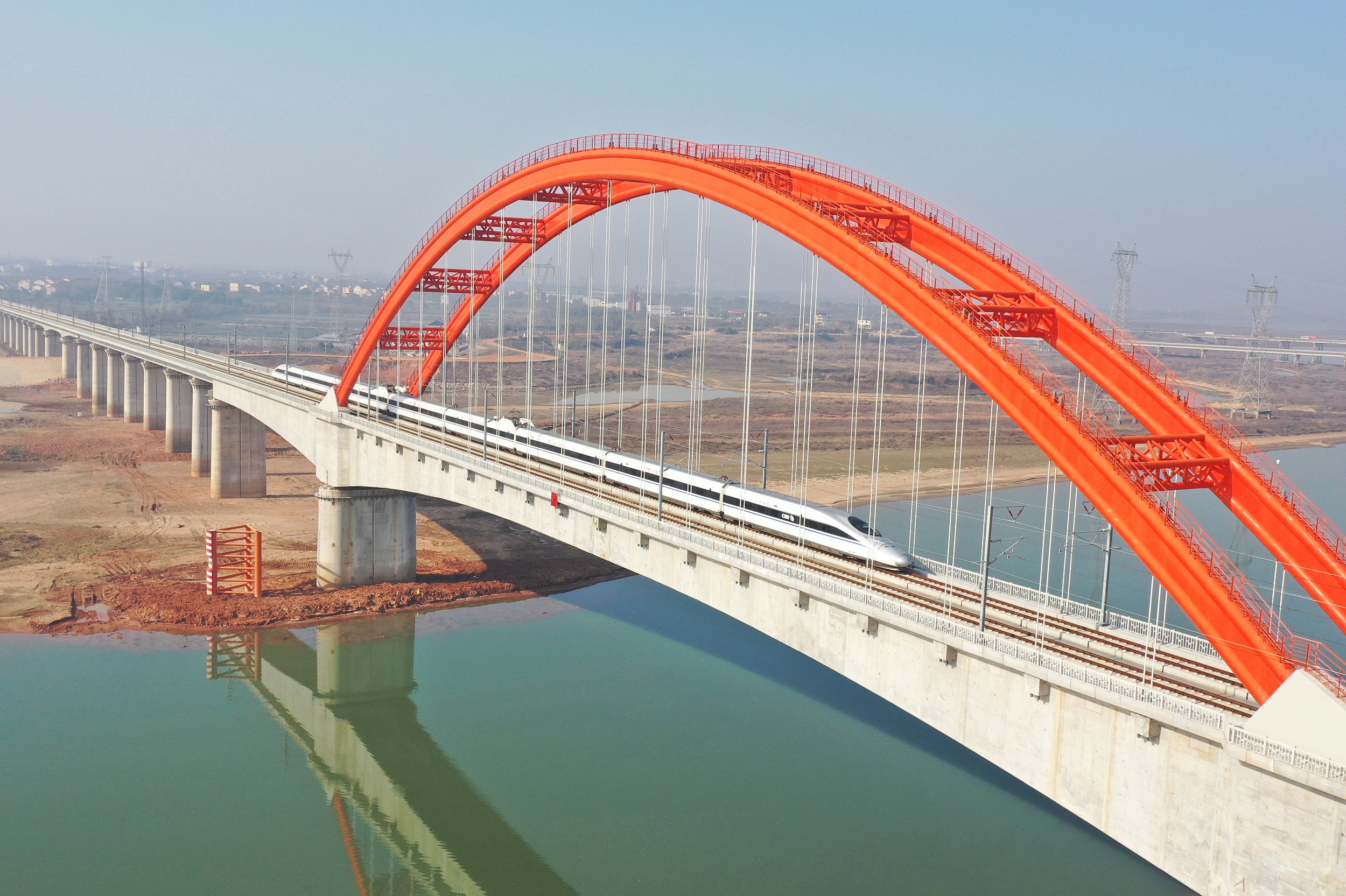Harmony Between Railway Construction and Natural Protection

One train passes the bridge along the Huangshan-Nanchang section of the Hangzhou Nanchang high-speed railway. (PHOTO: VCG)
By DU Peng & ZONG Shihan
In the cold of winter, the sleek speeding train is like a dragon, flying across Poyang Lake leaving ripples on the blue water's surface. The Hangzhou-Nanchang high-speed railway is now full-line operational, after the section connecting Huangshan city in Anhui province and Nanchang city in Jiangxi province officially went live on December 27, 2023.
Nearly 90 percent of the Huangshan-Nanchang section is elevated above lakes, plains, and hills. It passes through Poyang Lake, a habitat for Yangtze finless porpoises, Junshan Lake, a pollution-free aquatic products breeding base, and Jinxi Lake, a habitat of white swans. Protecting the beautiful ecological environment along the line has become an important task in the construction of the railway.
Reducing environmental pollution
"The construction environment along the railway is complex. This did not mean the environmental protection requirements were reduced, but were in fact given priority," said Huang Zhirong, the technical director of the Huangshan-Nanchang section of the Hangzhou-Nanchang high-speed railway.
At the design inception, railway designers achieved maximum protection of the ecological environment through various technical means such as optimizing railway lines and bridge types.
Compared to the 32-meter continuous beams used in traditional railway bridges, the Huangshan-Nanchang section adopted the 40-meter simply supported beams to cross the lake area, which can reduce more than 230 piers and minimize the ecological impact on lake areas, said Huang.
The Huangshan-Nanchang section spans 8.8 kilometers across the Poyang Lake wetland, with some bridge piers located within the provincial-level nature reserve of the salangid spawning ground. Throughout the construction process, workers transported all the mud, debris, and sewage outside. Mud boxes were used to prevent potential splashing of sludge and lake water pollution.
Protecting wild animals and birds
Poyang Lake is an important habitat for finless porpoises, which rely on sonar to communicate and are very sensitive to sound. In order to reduce disturbances to wild animals and residents along the line, the construction team used a noise-reducing reverse circulation drilling method for construction, and only scheduled high noise-level construction during daytime.
At the same time, sound sensors were installed at all temporary sites. The construction team assigned dedicated personnel to detect, analyze, and record noise emissions in real time, and took timely control measures to minimize noise impact on local life and the ecological environment. See page 2
In addition to finless porpoises, various rare birds are also regular visitors to the Huangshan-Nanchang section. Every autumn and winter, tens of thousands of migratory birds from all directions gather in Poyang Lake, including white cranes. At that time, stable pillars supporting the railway's power contact network became favorite places for migratory birds to visit.
In order to protect migratory birds from being injured by high voltage electricity and avoid contact network tripping caused by objects such as bird nests, builders installed reflective bird deterrents on all important contact network pillars.
At the same time, the team also used an intelligent monitoring platform to dynamically monitor and analyze various important equipment along the line during bird migration, and timeously discover bird nests in the process of being built. The young workers in this section also spontaneously formed a migratory bird protection team to learn emergency treatment measures for injured birds and strengthen promotion of migratory bird protection.
Now that the Hangzhou-Nanchang high-speed railway has commenced full operation, Huang is looking forward to seeing the ecological beauty of the harmonious coexistence of finless porpoises, white cranes, and high-speed trains.







